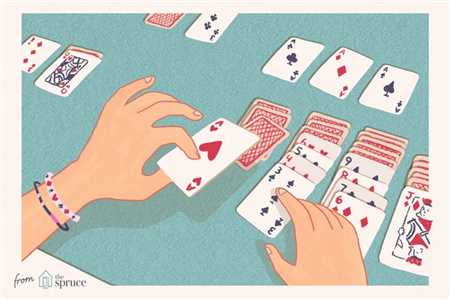

In the realm of competitive play, the initial distribution of assets plays a crucial role in shaping the dynamics of interaction among participants. Every contender finds themselves equipped with a predetermined quantity of resources, setting the stage for tactical decision-making and strategic planning.
As the interaction unfolds, the arrangement and oversight of these resources become pivotal. Individuals are tasked with not only utilizing their collected assets effectively but also with devising a layout that maximizes their potential advantages. This balance between offense and defense is fundamental to achieving success in such a structured environment.
Moreover, the nuances of personal arrangement serve as a testament to the importance of individualized strategy. Each participant must navigate the complexities of their unique setup, ensuring that their choices reflect both personal style and competitive intent. The journey through this landscape is not merely about play but about crafting a distinctive approach that can outsmart the opposition.
In a typical scenario, participants embark on their journey equipped with a specific number of tokens that serve as the foundation for their strategy. The initial distribution of these tokens plays a crucial role in establishing the dynamics and flow of play. Understanding how this aspect influences the overall experience can greatly enhance engagement and tactical decision-making.
The initial selection allows participants to strategize and form their approaches based on the assets in hand. Balancing the strengths and weaknesses of the available tokens becomes essential for planning future moves. Each individual’s method of organizing these selections can affect their immediate actions and long-term strategies.
Essentially, the way players categorize and prioritize their tokens not only reflects their strategies but also sets the stage for interactions within the collective space. By actively managing this starting point, participants create a foundation that supports their overall objectives and goals throughout the progression of the activity.
The initial distribution of components sets the stage for the competition that follows. This phase is essential as it ensures that all participants have an equitable starting position, which ultimately influences strategy and gameplay dynamics. Understanding the setup process is crucial for a smooth experience and a fair contest.
During the setup, a predetermined number of components are divided amongst the individuals involved. Typically, this involves the following steps:
Once the components are allocated, it is vital for each individual to arrange their items effectively. This organization may include:
By adhering to these principles, the initial stage fosters a conducive environment for competitive interaction, where strategies can unfold and evolve throughout the duration of play.
This section delves into the essential concept of how participants receive their initial set of cards, establishing the foundation for the entire experience. The method of allocation significantly impacts strategies and decision-making as the session unfolds.
During the commencement, participants typically receive a designated amount of cards. This allocation is pivotal as it influences tactics and interactions throughout the session.
Once the cards are in hand, the effective management of these resources becomes crucial. Participants must evaluate their options carefully to optimize their potential in subsequent turns.
A well-thought-out approach to handling allocated cards fosters better chances of success within the session.
Creating an organized and functional environment is essential for an enjoyable experience. The arrangement of cards and the layout will significantly impact how participants engage with the activity. A well-defined space allows for easier access to resources and enhances strategic thinking among participants.
Selecting an appropriate surface is the first step in preparing the area. Ideally, a flat and clean space, such as a table, works best. Ensuring that the surface is free from distractions will help maintain focus. The choice of the surface should also accommodate the number of participants and their cards comfortably.
Each individual should have a designated section where they can clearly display their cards and make strategic decisions. It is important to leave enough room for future moves and expansions. Keeping personal areas tidy can lead to more effective gameplay, as players will have a clearer view of their options. Establishing boundaries between these zones promotes organization and minimizes confusion during turn-taking.
The arrangement and control of individual sequences play a vital role in gameplay dynamics. Effective organization enables participants to make strategic decisions and enhances the overall experience. By adopting a systematic approach, players can efficiently track their resources, optimize their positions, and react to evolving situations on the playing field.
Structuring your layout begins with establishing clear categories for different types of assets. This not only aids in quick recognition but also simplifies decision-making processes during your turn. Consider dividing your sequences into distinct sections based on utility and relevance.
Additionally, prioritization is essential. Rank your resources based on immediate needs and potential benefits. By focusing on the most impactful assets, you can significantly influence the trajectory of the match. This strategic foresight allows for a proactive rather than reactive approach during play.
Finally, maintaining flexibility is key. Conditions can rapidly shift, requiring adjustments to your setup. Regular assessments of your organization will empower you to adapt swiftly and exploit opportunities as they arise, ensuring that you stay competitive throughout the duration of the interaction.
Effective organization and positioning of elements can greatly influence the outcome of any contest involving cards. Mastering the art of placement allows individuals to maximize their potential while simultaneously hindering their opponents. This section delves into various tactics that can enhance one’s approach to arranging different sets in distinct lanes.
One fundamental strategy involves analyzing the strengths and weaknesses of available options. Prioritizing powerful combinations at the forefront can create a strong offensive presence, while more defensive or versatile selections might be better suited for the back. Balancing these dynamics is crucial for sustaining momentum throughout a session.
Additionally, it’s important to consider the actions and tendencies of rivals. Anticipating their moves enables proactive placement, which can block their strategies or capitalize on their mistakes. Keeping flexibility in mind allows for adjustments as the conditions evolve, providing a significant advantage.
Another critical aspect is fostering synergy among the chosen elements. Complementary configurations can amplify effectiveness, leading to unexpected advantages that can turn the tide in one’s favor. Experimenting with various alignments can uncover unique combinations that might catch opponents off guard.
Lastly, evaluating the outcome of each alignment after the session can offer valuable insights. Reflecting on what worked well or what didn’t can refine future placement strategies and enhance overall performance, creating a continuous cycle of improvement and adaptation.
Effective handling of your resources is crucial for achieving success in any competitive environment. Each participant must navigate their options wisely, utilizing available assets strategically to enhance their position. This approach not only maximizes potential benefits but also minimizes unnecessary risks that can hinder progress.
To excel, one must prioritize understanding the qualities and capabilities of their assets. Assessing the strengths and weaknesses of what you hold allows for informed decisions. Recognizing when to play a card or hold back for a more advantageous moment can turn the tide in one’s favor.
Strategic organization of your assets is equally important. Developing a clear structure helps in efficient retrieval and deployment, ensuring you can react promptly to unfolding situations. Consider grouping cards by characteristics or potential uses, facilitating quicker decision-making.
Furthermore, anticipating opponents’ moves plays a vital role in shaping your own strategy. By observing their actions, you can infer their intentions and prepare countermeasures accordingly. This proactive mindset allows you to stay one step ahead, making your choices more impactful.
In summary, mastering the art of managing your resources involves a blend of strategic foresight, efficient organization, and insightful observation. By applying these principles, you can enhance your effectiveness and increase the likelihood of achieving your objectives.
Organization is crucial in managing your display, ensuring that you can navigate your options effectively. A well-structured alignment not only enhances your strategic decisions but also provides clarity during play. Keeping everything in its rightful place allows for smoother interactions, making it easier to evaluate your position and respond to challenges.
Implementing a thoughtful approach to how you arrange your items can significantly influence your overall effectiveness. Consider the following methods:
As the situation evolves, adapting your layout is essential. Flexibility will help you respond to new developments:
By maintaining order in your arrangement, you not only enhance your efficiency but also prepare yourself to tackle any unforeseen circumstances that arise during your turn.
[…] cater to different preferences, ensuring there is always something fresh to discover. From classic card variants to modern adaptations, the lineup is constantly evolving to keep players intrigued. Each […]
[…] the fundamentals of this engaging card game is essential for anyone looking to participate. At its core, the game revolves around making […]
[…] this contest, players are dealt two cards, while the dealer receives one face-up and one face-down card. Each card holds a specific value: numbered cards are worth their face value, face cards are valued […]
[…] dynamic card games that test both cognition and intuition to vibrant wheel-based adventures, options abound for […]